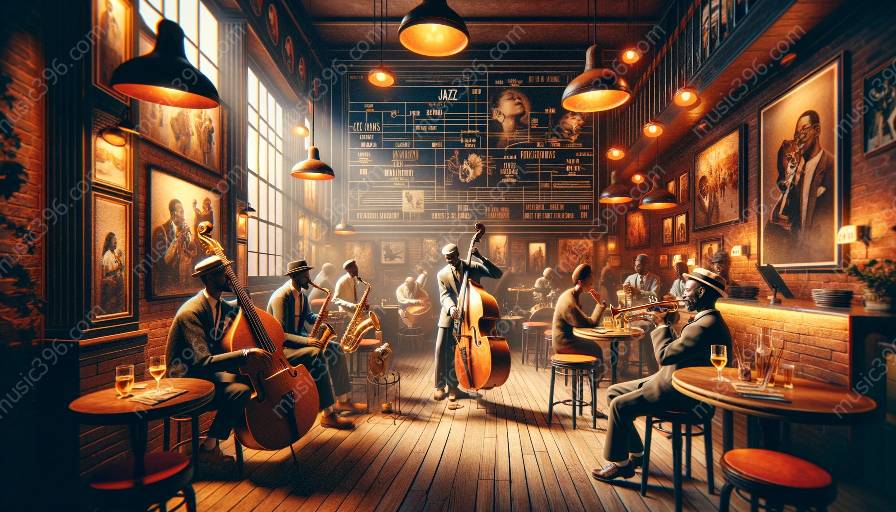Jazz music has a rich history that has evolved over the years, and as we move into the future, new trends are emerging that are shaping the direction of the genre. The future trends in jazz music are compatible with both the history of jazz music and jazz studies, as they build upon the foundations laid by the pioneers of the genre while incorporating modern influences and technologies.
History of Jazz Music
To understand the future trends in jazz music, we must first acknowledge its history. Jazz music originated in the early 20th century in the African American communities of New Orleans, Louisiana. It draws upon a diverse range of musical influences, including African rhythms, European harmonies, and blues music. Over the years, jazz has gone through several distinct stylistic phases, including Dixieland, swing, bebop, cool jazz, and fusion.
Throughout its history, jazz has been at the forefront of cultural and social movements, reflecting the changing attitudes and experiences of its audience. The genre has also played a significant role in breaking down racial barriers and bridging cultural divides.
Jazz Studies
Jazz studies encompass a broad range of academic disciplines and practical training programs. Students of jazz studies typically engage in the study of jazz history, theory, improvisation, and performance. These programs are designed to provide a comprehensive understanding of the genre and its cultural significance, as well as to develop the skills required for proficient musicianship.
Jazz studies are essential for preserving the heritage of jazz music and nurturing the next generation of talented musicians. By exploring the history and theory of jazz, students can gain a deeper appreciation for the genre and its impact on the music industry.
The Future Trends in Jazz Music
The future of jazz music is shaped by a variety of trends that are influenced by technological advancements, global connectivity, and evolving musical preferences. These trends are not only compatible with the history of jazz music but also build upon its legacy, pushing the boundaries of tradition while maintaining the core elements that define the genre.
1. Fusion of Genres
One of the most prominent trends in the future of jazz music is the fusion of genres. Jazz musicians are increasingly drawing inspiration from a wide range of musical styles, such as hip-hop, electronic music, and world music. This fusion creates innovative and eclectic sounds that appeal to diverse audiences and reflect the interconnected nature of contemporary music.
2. Technology and Innovation
Advancements in music production and digital technology have revolutionized the way jazz music is created and consumed. Jazz musicians are embracing digital platforms, virtual reality, and interactive experiences to engage with their audience in new and exciting ways. Additionally, technological innovations have enabled the integration of electronic instruments and effects into jazz performances, expanding the sonic possibilities of the genre.
3. Cultural Diversity and Global Influences
The future of jazz music is marked by an increasing embrace of cultural diversity and global influences. As the world becomes more interconnected, jazz musicians are incorporating a wide variety of musical traditions from around the globe into their compositions. This trend not only enriches the sonic landscape of jazz but also fosters cultural exchange and understanding among musicians and audiences.
4. Emphasis on Education and Outreach
In response to the changing landscape of the music industry, the future of jazz music places a strong emphasis on education and outreach. Jazz studies programs and community initiatives are vital for nurturing emerging talent, preserving jazz heritage, and engaging with new audiences. By investing in educational programs and outreach efforts, the jazz community can ensure the continued growth and relevance of the genre.
5. Collaborative and Cross-Disciplinary Projects
Jazz musicians are increasingly collaborating with artists from diverse disciplines, including visual arts, dance, and theater. These collaborative projects blur the boundaries between artistic mediums and create immersive and multidimensional experiences for audiences. By integrating various art forms, jazz musicians are pushing the boundaries of creativity and exploring new avenues for artistic expression.
Conclusion
The future trends in jazz music are not only compatible with the genre's rich history and principles but are also paving the way for exciting innovations and transformations. As jazz continues to evolve and adapt to the changing cultural and technological landscape, it remains a vital and influential genre that resonates with audiences around the world. By embracing these future trends, the jazz community can build upon the genre's legacy while reaching new heights of creativity and cultural relevance.





























